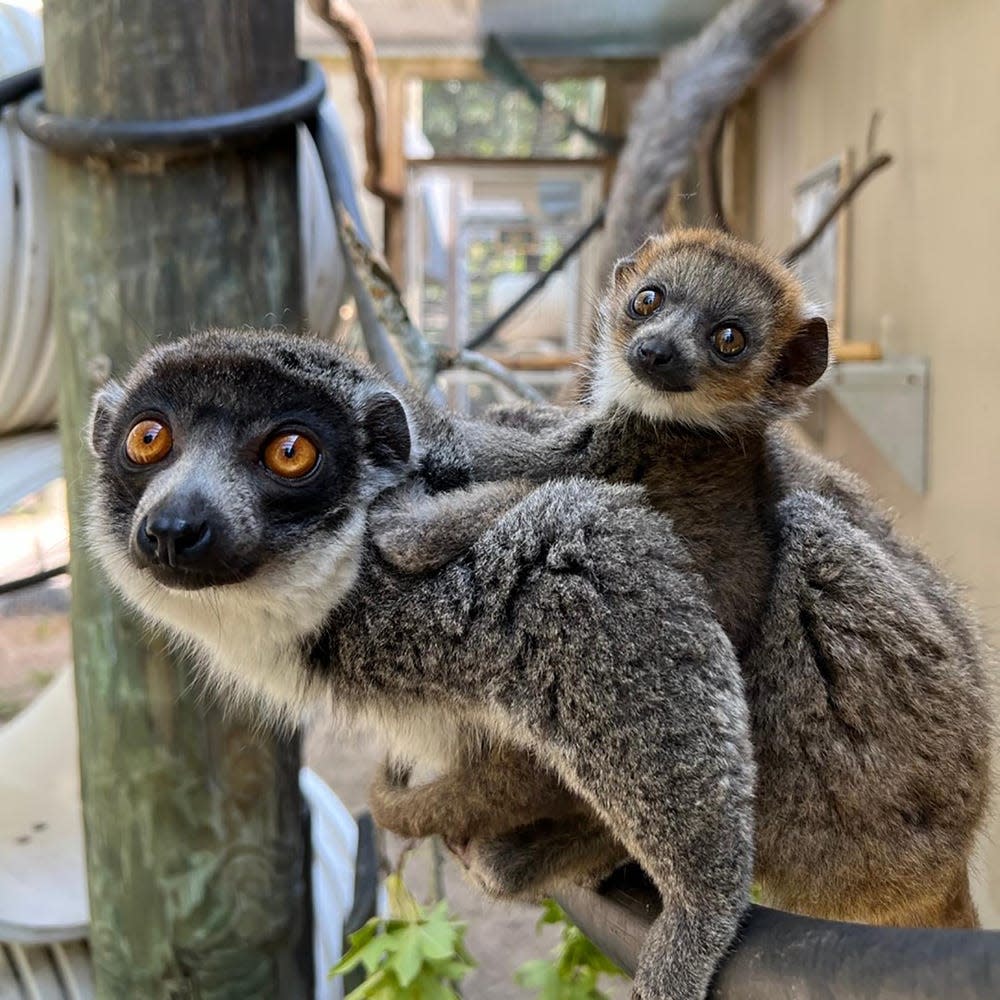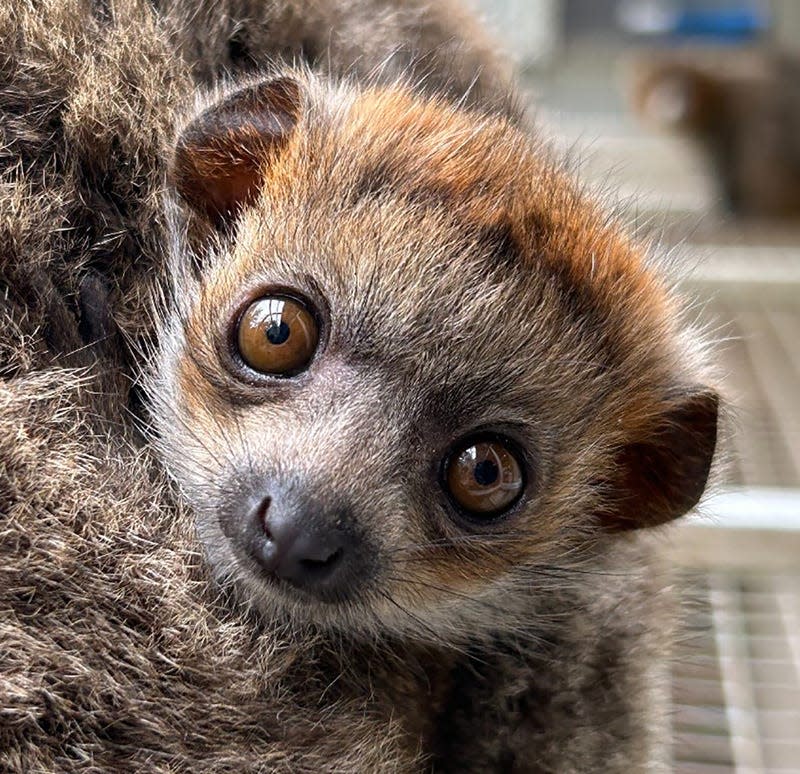Aww, those eyes! First critically endangered mongoose lemur born at the Jacksonville Zoo

For the first time, a critically endangered mongoose lemur has been born at the Jacksonville Zoo and Gardens.
The baby lemur's parents are Olivia, who has given birth twice before at other zoos, and Ignacio, who is a first-time father, according to a post on the zoo's Facebook page. Olivia also is grandmother to a rare set of twins born in May at the Saint Louis Zoo in Missouri.
The new Jacksonville family is currently not on public exhibit and is "spending quality time behind the scenes," according to the zoo's Facebook post, which provided no further details about the birth or when it occurred.
The last lemur born at the zoo arrived March 10, 2022, to blue-eyed black lemurs Hemsworth and Hendricks.
Baby lemur at the zoo! Cute and critically endangered baby lemur born at Jacksonville Zoo and Gardens
Check out the newest jaguar in town: First new cub born at Jacksonville zoo in 10 years
Mongoose lemurs are native to Madagascar, which is home to about 112 species, but are critically endangered because of hunting and loss of habitat. The Jacksonville Zoo is a contributing member of the Madagascar Fauna & Flora Group, an international nonprofit consortium of zoos, aquariums, botanical gardens and universities working to conserve the East African country's biodiversity. The zoo also is one of 16 Association of Zoos and Aquariums members that support the population of about 60 mongoose lemurs in the U.S., according to the post.
Zoo officials could not be reached for comment Monday.
According to a blog post in 2021, the Jacksonville Zoo has five species of lemurs, including three breeding pairs: mongoose lemurs Olivia and Ignacio, Coquerel’s sifakas Gulliver and Aemilia and blue-eyed black lemurs Hemsworth and Hendricks.

Olivia's grandbaby lemur twins at the Saint Louis Zoo, Odie and Beignet, were born to mother Tiana and father Felipe, according to a May 14 Facebook post.
Like the new Jacksonville lemur family, Tiana and her twins were behind-the-scenes "to give the youngsters time to grow and the family time to bond together," according to the post. They were to go on exhibit later this summer.
Snakes alive! Herpetologist takes over as new president of Jacksonville Zoo
$50 million redesign: Jacksonville Zoo looks to add new manatee, lion exhibits
The smallest species of their genus, mongoose lemurs weigh about 3 pounds. Their fur color varies by gender: Males have reddish-brown cheeks and beard and a gray muzzle and face, while females have white or creamy gray cheeks and beard and tend to be a lighter gray overall, according to the Lemur Conservation Foundation. The foundation is based in Myakka City, Florida, where it runs a 130-acre lemur reserve, including a managed breeding program.
bcravey@jacksonville.com, (904) 359-4109
This article originally appeared on Florida Times-Union: First critically endangered mongoose lemur born at Jacksonville Zoo

